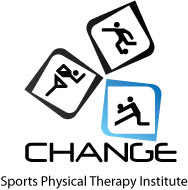I was recently asked by reporter Landon Hall of the O.C. Register to give some exercises that are helpful for people with back pain. He posted some of my response in his blog.
Here is the complete information that I sent to him.
Treating back pain can be very complicated because there is not just one reason for having back pain. There are so many studies on how to best treat back pain, but most studies fail to take into account the fact that a report of back pain could be coming from very different sources. This is also why it is hard to give one set of exercises that will help with "back pain". For example, some people's condition may indicate doing back extension type exercises (like the upward facing dog in yoga) are great for them, while for other people this would be the absolute worst thing to do. With this caveat, here are some generally safe and good exercises to do for back pain.
What I tend to see a lot is back pain originating from mobility restrictions in other body parts, such as the hips and thoracic spine. Here would be back exercises 101:
IF YOU HAVE BACK ISSUES, YOU SHOULD SEEK HELP FROM A PHYSICIAN BEFORE ATTEMPTING TO DO THINGS ON YOUR OWN. THIS IS NOT MEANT TO REPLACE A MEDICAL EXAMINATION.
None of these should cause pain. If they do, don't go through the full range of motion, or don't do it at all.
Single knee to chest: Laying supine (flat on the back) pull one knee up towards your chest and hold for 30 seconds. Repeat with the other side. Do 2-3 repetitions
Knee to opposite shoulder (piriformis stretch): Laying supine again, pull your right knee up and across your body towards your left shoulder. Hold for 30 seconds and repeat with the other side. Do 2-3 repetitions
Wig Wags: Lay in a "hook-lying" position. (Supine with knees bent and feet on the floor) Arms out to the side with the palms down on the floor. Slowly rotate your legs to twist to the right until you feel a gentle stretch. You can just gently rotate side to side without much of a hold time, or hold for 15 seconds or more depending on how it feels. Repeat for about 1-2 minutes
Hamstring Stretches: There are many ways to do these. The important thing to remember (and where people commonly do them wrong) is that you should not be arching at your low back. The best way is to sit with your back wedged against the wall and the floor or a bench. Hold this stretch for a long time, around 2-3 minutes. Let your muscles relax. Don't stretch so intensely that you can not relax- you are only fighting your cause by having the muscles tense up and fight the stretch. If sitting with two legs in front of you is too intense, try sitting at the edge of a bench with one leg hanging off the side, foot on the ground, and the other leg in front of you stretching.
Pelvic Tilts: Lying supine in "hook-lying" position rock your pelvis forward and backward. A way to think of this, is to push your back into the floor more (backwards rotation) and then arch your back off the floor (forward rotation). Even though I described the motion from your back, the motion should be coming from your pelvis, which makes your back do the motions I described.
Those are some basic stretches to go off of. In addition to those people should be working on their hip flexor flexibility, thoracic spine mobility and add in core and pelvic stabilization exercises.
This information can also be seen on www.sportschange.com
Wednesday, June 16, 2010
Thursday, December 31, 2009
USA Volleyball Preferred Physical Therapy Provider
Change Sports Physical Therapy Institute has been named the Preferred Physical Therapy Provider for USA National Volleyball Teams. During the course of the next year, Change SPTI will be working with the indoor national teams to assist them with rehabilitation of their injured athletes. Change SPTI is proud to be able to assist the national teams as they work the next three years in preparation for the 2012 Olympic Games in London.
Change SPTI shares a facility with the USA National Indoor Volleyball Teams inside the American Sports Center in Anaheim, CA. This proximity allows for a lot of interaction between Change SPTI and the national teams.
Matt Swift is the physcial therapist who will be working with the national teams on behaf of Change SPTI. He is a doctor of physical therapy as well as an athletic trainer. He worked this past summer ('09) with the national teams and is looking forward to further involvement in the year to come. The combination of his experience and training in physical therapy, athletic training and collegiate sport participation makes a good fit for assisting with the rehabiliation of these top level athletes.
For more information on Change Sports Physical Therapy Insitute, go to the website at http://www.sportschange.com/.
Change SPTI shares a facility with the USA National Indoor Volleyball Teams inside the American Sports Center in Anaheim, CA. This proximity allows for a lot of interaction between Change SPTI and the national teams.
Matt Swift is the physcial therapist who will be working with the national teams on behaf of Change SPTI. He is a doctor of physical therapy as well as an athletic trainer. He worked this past summer ('09) with the national teams and is looking forward to further involvement in the year to come. The combination of his experience and training in physical therapy, athletic training and collegiate sport participation makes a good fit for assisting with the rehabiliation of these top level athletes.
For more information on Change Sports Physical Therapy Insitute, go to the website at http://www.sportschange.com/.
Subscribe to:
Comments (Atom)
